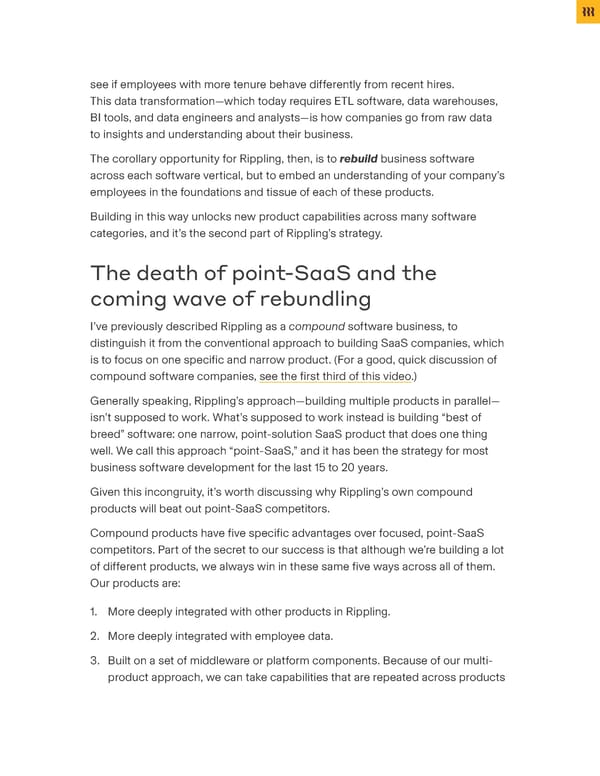see if employees with more tenure behave differently from recent hires. This data transformation—which today requires ETL software, data warehouses, BI tools, and data engineers and analysts—is how companies go from raw data to insights and understanding about their business. The corollary opportunity for Rippling, then, is to rebuild business software across each software vertical, but to embed an understanding of your company’s employees in the foundations and tissue of each of these products. Building in this way unlocks new product capabilities across many software categories, and it’s the second part of Rippling’s strategy. The death of point-SaaS and the coming wave of rebundling I’ve previously described Rippling as a compound software business, to distinguish it from the conventional approach to building SaaS companies, which is to focus on one speci昀椀c and narrow product. (For a good, quick discussion of compound software companies, see the 昀椀rst third of this video.) Generally speaking, Rippling’s approach—building multiple products in parallel— isn’t supposed to work. What’s supposed to work instead is building “best of breed” software: one narrow, point-solution SaaS product that does one thing well. We call this approach “point-SaaS,” and it has been the strategy for most business software development for the last 15 to 20 years. Given this incongruity, it’s worth discussing why Rippling’s own compound products will beat out point-SaaS competitors. Compound products have 昀椀ve speci昀椀c advantages over focused, point-SaaS competitors. Part of the secret to our success is that although we’re building a lot of different products, we always win in these same 昀椀ve ways across all of them. Our products are: 1. More deeply integrated with other products in Rippling. 2. More deeply integrated with employee data. 3. Built on a set of middleware or platform components. Because of our multi- product approach, we can take capabilities that are repeated across products
 Investor Memo 2024 Page 5 Page 7
Investor Memo 2024 Page 5 Page 7